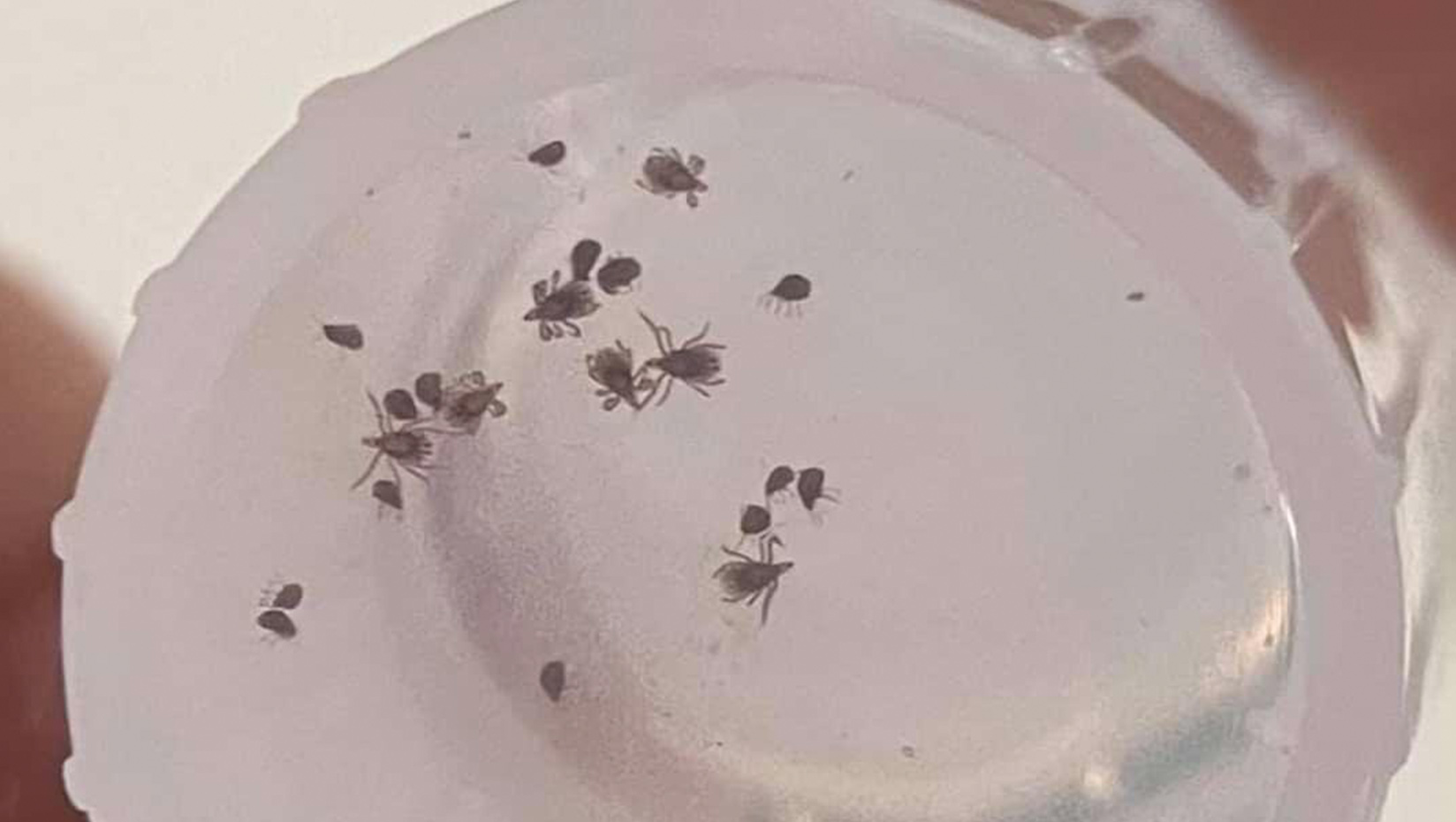
2021 Maine Forest Tick Survey results released
Nine southern and coastal Maine counties had a three-fold increase in the ticks in 2021 compared to the same time the year before, according to the latest results of the Maine Forest Tick Survey at the University of Maine.
The 2021 survey marked the second year of a multiyear, multidisciplinary study examining the link between forest land management and ticks. The survey results are online.
In both the 2020 and 2021 surveys, the ticks were collected in July, which marks the peak population size of blacklegged tick nymphs in Maine. The nymph stage is considered most hazardous to human health because the nymphs are small and may be difficult to notice, and have already had one blood meal where they may have acquired a pathogen from a vertebrate host.
For the 2021 survey, 150 volunteers across nine southern and coastal Maine counties collected 5,238 ticks — 2,341 blacklegged ticks, 2,872 dog ticks and 70 rabbit ticks.
Volunteers for the 2021 survey collected an average of 14.2 blacklegged tick nymphs per property, up from the 2020 survey where participants collected 3.7 blacklegged tick nymphs per property. Summer 2021 was much wetter and cooler compared to 2020, which researchers say may be why more ticks were collected in the second year.
“Last summer our volunteers collected over 5,000 ticks across a large area in southern and coastal Maine. Tick densities can naturally fluctuate from year to year, and so it’s important to collect data across multiple years. Collecting ticks over two summers gave us a clear picture of how certain forest management practices influence tick populations,” says Elissa Ballman, senior research associate at UMaine and citizen science coordinator for the survey.
The survey also revealed patterns in the distribution of ticks in the forest landscape. Properties that had timber harvests in the past 15 years had significantly fewer blacklegged tick nymphs than those that have not been harvested in 20 or more years. Properties that had invasive plants had significantly more blacklegged tick nymphs than properties without, particularly those with barberry and honeysuckle.
The researchers tested 2,107 blacklegged tick nymphs for pathogens. Of the tested nymphs, 24.3% were carrying Borrelia burgdorferi, the bacterium responsible for Lyme disease in humans; 5.8% were carrying Anaplasma phagocytophilum, the bacterium responsible for human granulocytic anaplasmosis; and 5.8% carried Babesia microti, the organism responsible for human babesiosis. All three pathogens were found in all nine counties surveyed, but the highest concentration of B. burgdorferi infected ticks were in Knox, Lincoln and York County. Meanwhile, A. phagocytophilum was most prevalent in Cumberland and Lincoln County, and B. microti in Lincoln County.
“These findings complement a growing body of literature that suggests that land management history can dramatically alter the distribution and infection prevalence of disease vector tick species,” says Allison Gardner, assistant professor of arthropod vector biology and principal investigator of the study.
The survey volunteers also collected 455 non-tick arthropods. The researchers published the data from these results so that researchers can also know which insects are commonly mistaken for ticks, like spiders, mites, aphids and immature stink bugs.
The study will not be repeated in 2022, but may be replicated in the future, according to the researchers.
“The efforts of our community science volunteers enable data collection under a variety of forest conditions at unprecedented spatial scales,” Gardner says. “As the blacklegged tick and the pathogens it transmits continue to spread throughout the state, we hope to leverage these findings to develop practical recommendations for area-wide reduction of tick densities.”
Contact: Elissa Ballman, elissa.ballman@maine.edu
